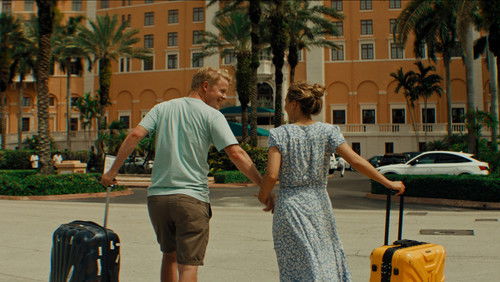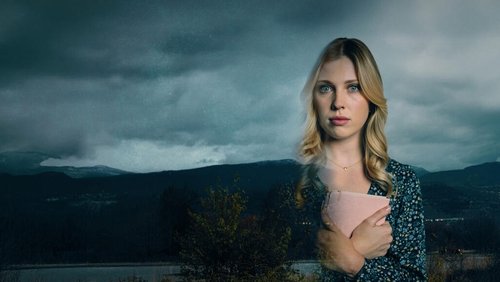Dambusters Declassified (TV Movie 2010)
25KDambusters Declassified (TV Movie 2010). 59m
“In this 2010 BBC documentary, British actor Martin Shaw takes viewers on a trip that retraces the mission and flight of the World War II Dam Busters. Former RAF flyer Chris Norton pilots a twin-engine plane, as he and Shaw follow the route taken by 19 RAF Lancaster bombers on the night of May 16, 1943. The 400-mile trip to bomb three dams in Germanyu0026#39;s Ruhr River Valley culminated two months of feverish preparation. It was the first time that any air force had flown a low-level precision bombing mission at nighttime. And it was the first, and only time, that an air force would use a specially designed bouncing bomb that would skim across the surface of a lake to destroy a dam. u003cbr/u003eu003cbr/u003eA 1955 movie, u0026quot;The Dam Busters,u0026quot; portrays the planning, preparation and conduct of Operation Chastise. It was a smash hit in its day, as was the report of the Dambusters Raid that British officials released two days after the 1943 event. That was smack dab in the middle of the war, and newspapers in England, the U.S. and elsewhere had photos that showed the devastation from two breached dams – the Möhne and Eder. The movie remains a first-rate film of World War II for posterity. u003cbr/u003eu003cbr/u003eBefore Shaw heads out to retrace the actual flight in this film, he clarifies some of the details of the actual mission, and notes some fictional parts in the 1955 movie. It shows Guy Gibson (played by Richard Todd) attending a theater musical review and noticing the spotlights shining on the stage from different angles. That inspired him to develop a way for the planes to know when they were flying at the exact elevation for the bomb release. Shaw says this was pure fiction, and that the solution was proposed by an engineer in the air ministry. u003cbr/u003eu003cbr/u003eThe 1955 movie credits Barnes Wallis with the idea of attacking the German dams. In reality, the war department had thought of that by the late 1930s as a way to cripple German war production. Barnes Wallis was the engineer who said a special bomb could be designed to do the job, and he got the job, as the movie shows. The movie also portrayed Gibson as easy-going and fun loving with his men, but that wasnu0026#39;t his true character. He was a serious disciplinarian. The movie shows all of his former crew signing on with him in 617 Squadron, but only one man actually did so. u003cbr/u003eu003cbr/u003eMuch of the rest of the movie though is true to events. This documentary was made for the 70th anniversary of the start of the Battle of Britain in 1940. It memorializes the crews of the Dambuster Squadron. And, it has interviews with some relatives and friends of the squadron members. It also has Johnny Johnson, the last living member of the squadron in England (of four then alive in the world). He was the bomb aimer in the plane piloted by the American flyer, Joe McCarthy that attacked the Sorpe Dam. Johnson dropped one of the two bombs that hit the dam and damaged it, but the dam didnu0026#39;t breach. u003cbr/u003eu003cbr/u003eShaw visits the Möhne Dam in Germany, where people today enjoy it for recreation. Paying due respect to the losses of human life, he notes the tragedy of war. Chris Norris says that the Geneva Conventions have been updated and now forbid the bombing of dams. u003cbr/u003eu003cbr/u003eThis film goes to RAF Scampton near Lincoln in east-central England. Shaw visits the bare and deteriorating building and office where Guy Gibson and the crew met and relaxed. He says, u0026quot;I try to put myself in Guy Gibsonu0026#39;s shoes as it were, the night before the raid, sitting in this office, with that awesome responsibility on your shoulders at the age of 24. It just it doesnu0026#39;t compute, you know.u0026quot; Military historian John Sweetman is interviewed and gives the background of Gibson. He was born in India, but at age six his parents divorced and his mother moved them to England. She became an alcoholic by the time he was 12. He was of short stature and a handsome chap. He didnu0026#39;t excel in any sports or activities. He made friends, but mostly was reserved. But, from an early age, he was taken with flying. u003cbr/u003eu003cbr/u003eShaw notes that the crews came from all around the U.K. and America. Shaw and Norton fly over the Derwent Dam in the Derbyshire Peaks district where the Dambusters practiced their low flying, approaches and bombing runs. Some relatives and friends of crew members are interviewed at a recent annual gathering for the Dambuster memorial. They include Shere Fraser, daughter of John Fraser who survived a crash and was captured by the Germans, eventually giving them much information about the mission. Others interviewed are Margaret Masters, a Womenu0026#39;s Auxiliary Air Force member and friend of Guy Gibson; Vic Townsend, a former crew mate of Jack Lidell who was killed in the raid; Clive Jefferies, stepson of Ray Grayston; and Maria Nierhoff, a survivor of the dam flooding.u003cbr/u003eu003cbr/u003eFinally, this film flies the actual course of the Dambusters in 1943. Shaw and Norton note how difficult it is to fly at 100 feet above the ground and to navigate. And they are doing it in broad daylight with clear skies. It strikes home how much more daring and incredible it was for the Dambusters at night during WW II with enemy fire and the risk of being shot down. u003cbr/u003eu003cbr/u003eAt the end of this film, Shaw says that the real story of the Dambuster Raid, u0026quot;isnu0026#39;t like the movie at all. In truth, itu0026#39;s far more unbelievable – a far more amazing story than that.u0026quot; This is a first- rate BBC production.”









